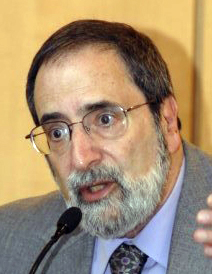By Laurie Baron

SAN DIEGO — Like every song, “Hava Negila” has a history. Roberta Grossman’s fun and informative documentary traces the evolution of the song from the “Ukraine to YouTube.” In the entertaining course of her film, she discredits many shibboleths about this infectious tune: it has not always had lyrics; it was not always danced to the hora; it was not always relegated to bar mitzvahs and weddings; and, it is not universally beloved.
The melody originated as a Hasidic nigun in the 19th Century in the Bukovina shtetl of Sadagora. The Hasidim sang such wordless melodies to elicit an ecstatic state for communing with God and overcoming the despair of everyday existence. Sadagora, which was part of the Austrian Empire, became the center of the Ruzhiner dynasty of Chasidim led by Rebbe Israel Friedman. By “coincidence” Grossman runs into his great, great, great, grandson when she is filming the synagogue his revered ancestor built. What Grossman omits is that the nigun probably derived from a Rumanian folk song and constituted a typical Diasporic borrowing from the culture of the host society.
In the early 20th century, some Ruzhiners immigrated to Palestine and transplanted their musical legacy there. The famed musicologist Abraham Zvi Idelsohn or his student Moshe Nathanson transcribed the song and added the celebratory Hebrew lyrics which succinctly mean: “Let us rejoice and be happy. Awaken brothers with a happy heart.” In true Jewish tradition, the descendents of Idelsohn and Nathanson still dispute who really penned “Hava Negila.” Idelsohn collected and published the Hebrew songs emerging from Jews in Palestine to lay the musical foundations of the embryonic Jewish state.
Folk dancing comprised another component of Zionist culture. Pioneer choreographer Gurit Kadman adapted the hora from East European circle dances to create dances for the kibbutzim that mirrored their collective ethos. Thus, “Hava Negila” became paired with the hora to express Zionist communalism and optimism despite the adversities befalling Jews elsewhere. When Israel became independent, crowds of Jews gathered in the streets and danced the night away. “Hava Negila” served as one of the most popular songs of this celebration of sovereignty.
In Grossman’s film, American Jews initially added “Hava Negila” to their repertoire to demonstrate their support for Israel. Though she attributes this to klezmer groups, I surmise that the route of transmission began with Zionist youth groups like Habonim. In the United States, however, the song quickly became depoliticized. As Jews moved to the suburbs, it rapidly was adopted as the centerpiece dance for energizing the guests at increasingly ostentatious bar mitzvahs and weddings.
This coincided with the entry of “Hava Negila” into American popular culture. It was embraced by both folk singers and orchestra leaders. Harry Belafonte introduced his rendition of “Hava Negila” on the Ed Sullivan Show and recorded it on one of his albums. An endearing clip recalls Belafonte performing the number with Danny Kaye. Connie Francis put “Hava Negila” on the pop charts and recorded an album of Jewish songs. She quips that she was “10 % Jewish on her manager’s side.” With new lyrics written by Julie Styne, Lena Horne transformed “Hava Negila” into the powerful civil rights anthem “Now Is the Time.”
Familiarity breeds contempt and parody. Bob Dylan butchered and mocked it in his “Talkin’ Hava Negeilah Blues; ” while Allan Sherman turned it into the ballad of “Harvey and Sheila,” a chronicle of a Jewish couple whose relationship parallels the upward mobility of Jewish baby boomers in postwar America. “Hava Negila” would become the plaything of satirists from the Muppets to “Rowan and Martin’s Laugh-In.”
From the 1970s on, young Jewish musicians trying to revive klezmer music considered “Hava Negila” the enemy, “an invasive species” that choked out a more authentic musical legacy. Israeli musicians resented that it seemed to be the only Hebrew song Diaspora Jews knew. At the same time, it became an ethnic cliché that performers around the world bowdlerized.
Yet Grossman’s film ends on a hopeful note. The Jewish Renewal Movement has restored it as a spiritual nigun and Jewish performers like Regina Spektor have found it unconsciously percolating up to the surface of their creativity.
One might have expected that Grossman’s documentary was destined for the art house and Jewish film festival circuit. That it is being screened at the Reading Cinemas Town Square 14 indicates that the song and film still possess much popular appeal.
*
Lawrence Baron recently retired from being the Nasatir Professor of Modern Jewish History at San Diego State University. He is the author of Projecting the Holocaust into the Present: The Changing Focus of Contemporary Holocaust Cinema (Rowman and Littlefield: 2005) and editor of The Modern Jewish Experience in World Cinema (Brandeis University Press: 2011). He may be contacted at lawrence.baron@sdjewishworld.com